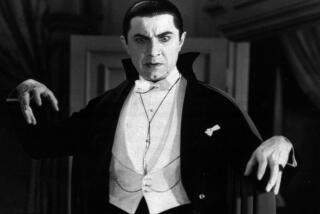Weighing the Merits of ‘American Psycho’
- Share via
Not since Salman Rushdie ticked off the Ayatollah has a book stirred up so much anger and hatred. So far, Bret Easton Ellis hasn’t had to go into hiding, but his new novel, “American Psycho,” is sufficiently offensive that Ellis would be well advised not to show his face in some places.
“American Psycho” is the latest offering from the novelist who made his debut a few years back with “Less Than Zero.” After paying a big advance for “Psycho,” Simon & Schuster opted not to publish it. They, like the hordes of consumers who were threatening to boycott all Simon and Schuster products, decided the book was tasteless. So Vintage snapped it up, reportedly for another big advance.
“American Psycho” will be released this spring. But it has already been reviewed and excerpted in more places than some bestsellers--mainly because people think the book’s graphic descriptions of murder and torture--especially of women--are disgusting and dangerous.
In the March Vanity Fair, author Norman Mailer takes a look at “American Psycho” and grapples with some of the important questions that arise whenever someone--in this case, the National Organization for Women, among others--calls for the suppression of creative efforts.
“American Psycho” is the story of Patrick Bateman, a 26-year-old Harvard graduate and serial murderer living on Manhattan’s Upper West Side. The world he inhabits is the trendy yuppie realm that blossomed in the junk bond era.
With an obsession for the all important brand names, Ellis describes this world where characters wear “six-button, wool-and-silk suit by Ermenegildo Zegna,” live in apartments decorated with “a long, white, down-filled sofa and a 30-inch digital TV set from Toshiba,” and eat at trendy restaurants on such fare as “swordfish meat loaf with kiwi mustard.”
Mailer does not like this book much. Still, he sees the protagonist’s brutality as a metaphor of sorts for the shallow, cold, merciless ways of the 1980s moneymakers. He can’t help comparing it--unfavorably--to Dostoyevsky. In his lengthy debate of its possible artistic merits, Mailer concludes that the book will reinforce the observation Hannah Arendt made in her study of Nazi war criminals--that “we are absurd, and God and the Devil do not wage war with each other over the human outcome.”
But the real absurdity here is that Mailer can apparently keep a straight face as he waxes philosophical about art in this context--as if anyone at Simon & Schuster or Vintage spent 20 seconds pondering “American Psycho’s” literary merits.
After all, Wall Street has nothing on the publishing industry when it comes to participation in the 1980s greed fest. Did Ellis’ publisher offer a $300,000 advance because of a passionate commitment to artistic expression? Do the folks who encouraged this book lust after the Nobel Prize? More likely, they were seduced by visions of themselves wearing Ermenegildo Zegna suits, watching 30-inch digital Toshiba TVs, and dining in expensive Manhattan restaurants on swordfish meat loaf with kiwi mustard.
REQUIRED READING
Skinheads, Nazis and Klansmen beware: Lenny Zeskind is watching you. As if you didn’t already know it. Working for an organization called the Center for Democratic Renewal, Zeskind and his colleagues travel the country gathering information on and taking legal action against racist groups, a few of which have reportedly plotted to kill Zeskind. James Ridgeway chronicles Zeskind’s crusade in the February Details.
NEW ON NEWSSTANDS
Life magazine was all set to test-market a downsized weekly edition when the Persian Gulf War hit. Now Life--In Time of War is hitting the stands as a weekly, available to anyone who coughs up the $2.50 cover price. Weekly Life will be published in addition to the larger-size monthly Life as long as the war or, presumably, interest continues. It is the first weekly edition since the old Life floundered 19 years ago. The premiere issue is relatively short on text but long on excellent color and black-and-white photography.
Managing Editor James R. Gaines’ note in the first issue should be of interest to those who follow wars. “Back in 1972,” he writes, “one of the explanations given for the demise of the weekly Life was the dominance of television . . . . The Gulf War has made us wonder about that. Since Jan. 16, television has bombarded America with images in the millions, 24 hours a day. Yet something seems to be missing.”
ESOTERICA
Fine Homebuilding, the beautiful bimonthly, celebrates its 10th anniversary with the February/March issue. The magazine is a combination how-to and perfectionists’ dream book, and the anniversary issue reflects the standard mix of articles, with features on building a timbered ceiling and a look at a home library constructed of maple and inlaid purpleheart.
More to Read
Sign up for our Book Club newsletter
Get the latest news, events and more from the Los Angeles Times Book Club, and help us get L.A. reading and talking.
You may occasionally receive promotional content from the Los Angeles Times.







